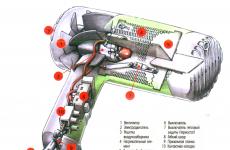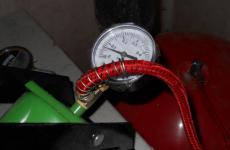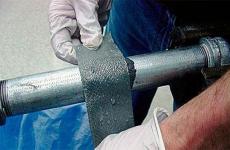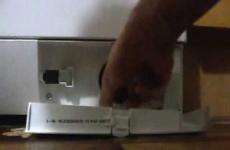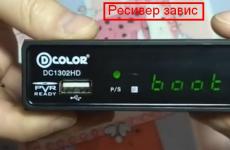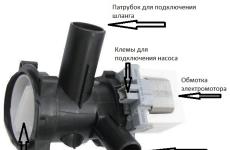TV amplifier
Noise at your favorite radio station, poor reception of TV channels in the country, or the disappearing voice of a friend in the speaker of the phone - all this is the result of a weak signal from the transmitter. An antenna amplifier is the solution to each of these problems.
The need to use a TV amplifier usually arises when the length from source to receiver is too long. Its use can also be caused by a large number of antenna connectors in the apartment, because each separation of the antenna signal leads to its weakening. The purpose of installing the amplifier is simple - to improve the quality of the transmitted television signal. And if we are talking about a digital signal? You probably already know that in order to receive digital TV in the most remote regions, as a rule, you need to use a good narrow-beam antenna. And in order to preserve the quality of the signal, before it gets into the digital receiver, you need to equalize and amplify it. A modern digital antenna amplifier will perfectly cope with this function. Such an amplifier, in addition to its high gain, is characterized by high resistance to external disturbances. A modern amplifier for DVB-T2 can serve both to amplify the reception from a conventional antenna, and to branch it into several outputs, or summarize signals from several antennas.
When should this device be used and what should be guided by when buying it? You will learn this in this guide.
What factors influence the deterioration of the TV signal
Symptoms of poor analog TV reception are not difficult to notice - the picture is distorted and disappears. As for the weakening of digital television, it is also easy to detect, but the only difference is that we are not dealing with ripples (snow) on the screen, but with breaks in the video stream. With weak broadcasting, the image may freeze, crumble into pixels or change color (usually to green).
Signal degradation reasons
Each reason for the deterioration of the broadcast should be analyzed individually, since its reception depends on local conditions: on the direction in which the signal travels, what obstacles are in its path, on the presence of hills, tall buildings in your area.
Before you finally decide to use an amplifier for your TV, let's take a look at the most likely causes of TV signal degradation.
- Maintenance of transmitters
In almost all cases of problems with TV display, their cause is on the user's side - incidents on the part of the sender are usually a break in the service of the transmitter, which sometimes takes several hours.
- Equipment malfunction
Outdoor antennas are exposed to external natural influences from day to day. Frost, heat, snowstorms and rain - all this the antenna can endure for years. If it is installed correctly. And if not, then one day moisture will penetrate the wires, splitters, amplifiers, and the problem will arise at the least expected moment.
- Wrong antenna
The most common reason for poor reception is that the signal level from the antenna is too low. The only correct solution would be to use the best model of it - preferably directional, not necessarily with an amplifier. But the situation can be partially improved by installing the antenna higher.
- Signal strength too high
Excessive intake can also be a common cause of problems. Living next to a TV tower and using a high gain antenna, we can overload the signal at the tuner's input.
- Cables
Has a significant impact on the quality of the reception. An old one with tattered insulation, bought at a flea market, or even worse - from pieces that you scraped "over barns and bottom sections", can cause such a strong attenuation that it absorbs the signal from even a very good antenna even before it reaches the TV.
- Separators and connectors
The properties and number of used splitters also affect the quality of the picture. Each such passive element (i.e., one that is not an amplifier) reduces the reception level. Careless installation of connectors, especially outside housing, can lead to rapid oxidation of the connections and, as a result, to significant attenuation of the TV signal.
- Noises
We are surrounded by a multitude of transmitting devices - relay stations, mobile phones, modems, routers, radios, alarms, etc. Radio waves from different frequency ranges can interfere with TV reception. Even devices without antennas, such as microwave ovens, fluorescent lights, electric vehicles, are interfering.
Between the devil and the deep sea
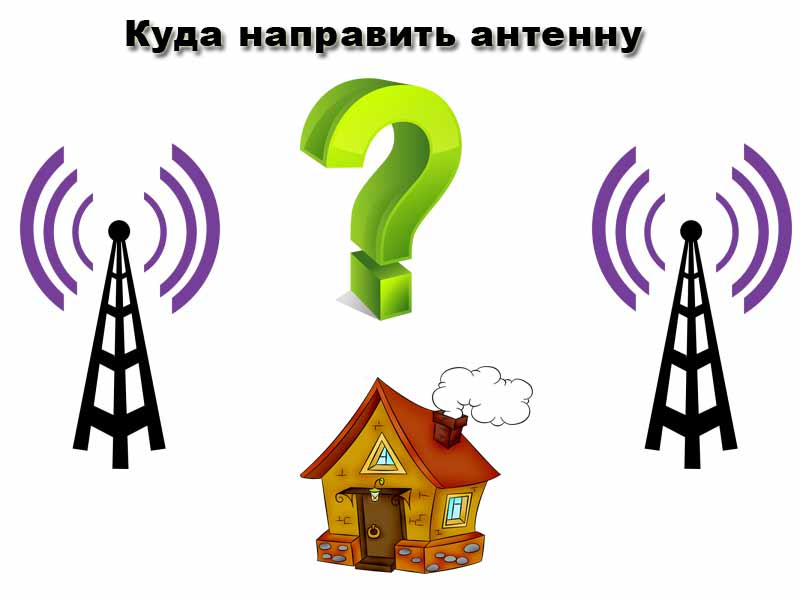
Problems with TV reception are also overtaking people living on the border of signals received from two transmitters. In this case, it is necessary to find out which transmitter is stronger, and in which direction the antenna should be directed. A directional antenna will work best in these locations.
TV signal amplifiers
It is quite simple to check whether the antenna amplifier will help to "squeeze" a more powerful signal out of the antenna. You can connect any TV as close to the antenna as possible, and if the signal does not improve, this may mean that something is wrong with the antenna. However, if the picture on the screen improves, then you should think about buying an amplifier. But what is it?
Another feature is the way the amplifying circuit is powered. If your amplifier for an antenna of digital television DVB-T2 requires a 5 Volt power supply, then it is better to supply them via a cable from the tuner itself. It is worse when the amplifier "asks" for 12 volts. There are two possibilities here, both with future problems:
- its power supply unit with a low-frequency transformer for a 50 Hz power supply network. The unit is not as light as pulse units for recharging a mobile phone, this unit does not give high-frequency interference, but produces low-frequency pulsations, which over time can worsen the operation of the antenna amplifier;
- the power supply with pulse conversion, very light, practically does not heat up, does not give low-frequency ripples, but it is guaranteed to give out high-frequency interference, which is not at all useful to the amplifier.
Choosing an amplifier for your TV
Not every antenna amplifier works perfectly, some of them have a lot of their own noise, others - even worse, are easily excited. Therefore, if you get a bad result with one antenna amplifier, you can try choosing a TV amplifier of a different model or with a different power supply method. For example, experiment to see if the antenna will work better if you apply voltage not from the "native" power supply, but from a digital tuner.
Antenna amplifier will not be able to help or even harm if:
- the reception level goes off scale beyond the limiting parameters of the amplifier;
- the antenna, in addition to the main signal, catches strong interference, which the amplifier will multiply;
- signal strength is extremely weak.
Amplification of an analog signal
The golden rule of good TV reception is that in order to receive good, it is advisable not to degrade it. To prevent this from happening, lay it correctly, monitor the health of the antenna and diagnose any depressurization in your apartment television network in time.
If the distance to the transmitting transmitter is long and the reception is very weak, then an additional signal amplifier must be installed.
If you receive analog air on a passive antenna, and distribute the signal to several receivers, then first you need to amplify it, and only then divide it according to directions. An active antenna splitter can do this. 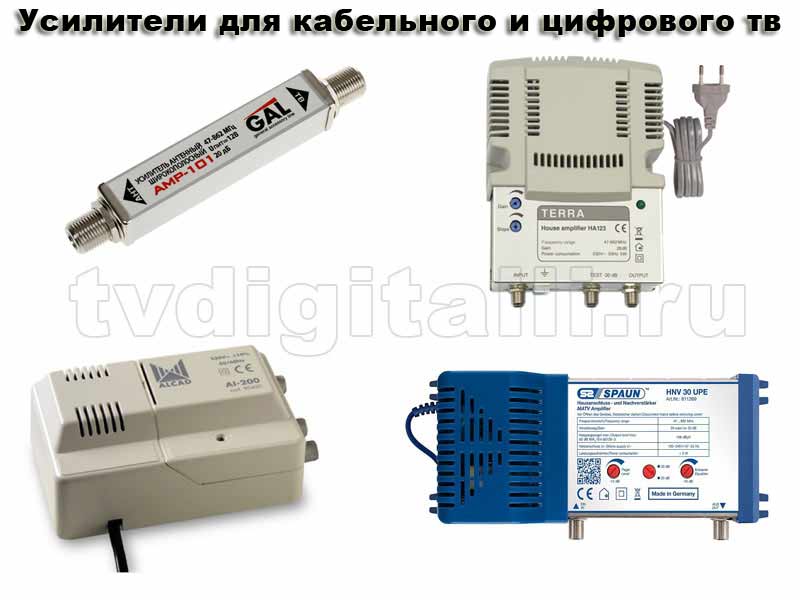
Amplification of cable TV
Since its inception, cable networks have not changed much. A local provider company receives a lot of television channels from the satellite, forms a television package from them, and distributes it to our homes, taking payment from each subscriber. To reach our house, the signal passes several times through the intermediate trunk TV signal amplifier, enters the TV signal amplifier of an apartment building, amplifies it once again, and is distributed to apartments. And yet, while this signal was going from the premises of the provider company to our house, it weakened a little.
Methods for ensuring reliable TV signal reception
There is no ready-made recipe. Each case is specific and requires an individual approach. What to do in this situation? In many cases, the signal does not require maximum amplification, just as it is not required to amplify the entire "bunch" of signals.
To be sure which case we are really dealing with, it is necessary to accurately measure the signal level from the receiving antenna. This is necessary in order to understand whether we are receiving a direct or reflected signal (or even several), and to determine further steps.
One way to get reliable reception is to correct the direction of the antenna or its location in height, and often both. Sometimes it is enough to move the antenna mast a meter or two to get much better broadcast quality.
It is worth having a level meter on hand when you need to make sure that the broadcast quality is sufficient and requires only additional amplification, or maybe you are receiving a strong but excessive signal? If the signal is strong, you can choose the right antenna. It may also be enough to deliberately change the direction of reception or the location of the antenna to attenuate the signal while eliminating its reflected beams. 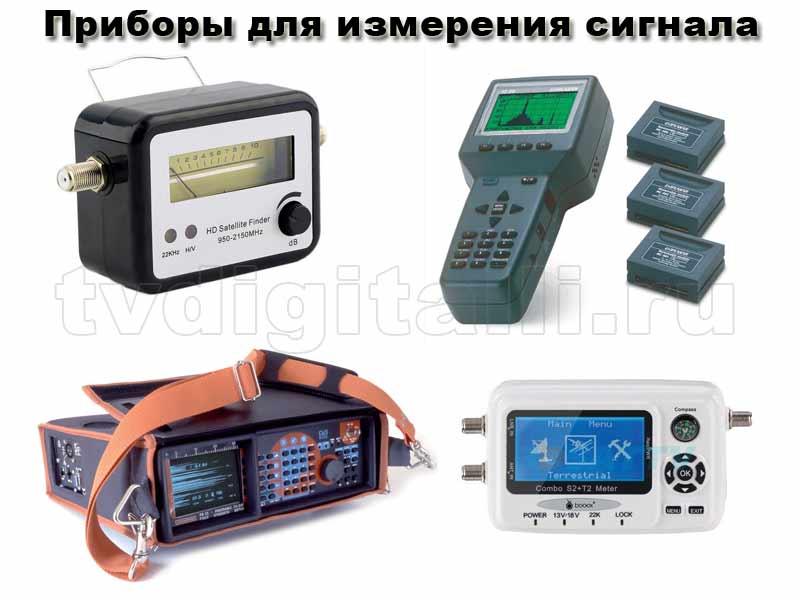
When receiving digital TV, it should be remembered that when strong radio frequency vibrations are superimposed on each other, you need to make a choice in favor of a passive directional antenna without using any amplifying elements. In this case, the amplifier to the TV antenna will contribute to intermodulation, which will lead to malfunctions and instability of the digital decoder.
Ways to amplify the power of a TV antenna
In fact, the ways to increase the power of a TV antenna can be correlated with medical approaches: apply "therapy" or go straight to the "surgical" route. As for drastic measures, here the very first step is to change the antenna itself to a stronger and more expensive one. This also includes the purchase of an active antenna instead of a passive one.
But you can act more gently, especially if your antenna has served you the honor of honor for more than one year:
- experiment with the direction of admission;
- raise the antenna higher;
- if possible, clear the path for the signal;
- eliminate all "non-contacts", replace the cable;
- equip the antenna with a signal amplifier. Many external antennas have the technological ability to install an amplifying board, if it turns out that one is needed.
Using the antenna amplifier
The antenna signal amplifiers of the TV are the very first, after the antenna, to perform the initial correction of its level.
The type of device that is right for you depends on the reception conditions in your area and on the specific needs of the entire television installation. If you need to amplify the entire RF bandwidth, you can use a fixed gain wideband amplifier. If, on the contrary, in your region, high-frequency transmitters have a significant effect on the correct reception of frequencies from the upper UHF band and there is interference caused, for example, by passing cars or a neighbor's lawnmower, then you will need another amplifier model - with a fixed gain, but with a limited operating range. frequencies. 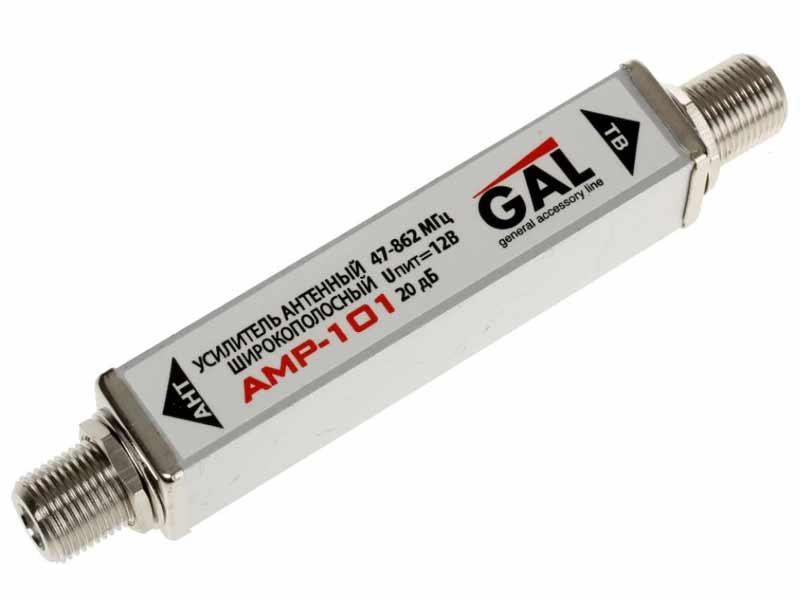 Modern amplifiers from various manufacturers have a fairly ergonomic shape, which, in fact, allows them to be mounted anywhere. This means you can use the amplifier in an existing antenna installation without having to disassemble the antenna. However, it should be remembered that due to the violation of the signal-to-noise ratio with increasing distance from the antenna, it is recommended to install it as close to the antenna as possible.
Modern amplifiers from various manufacturers have a fairly ergonomic shape, which, in fact, allows them to be mounted anywhere. This means you can use the amplifier in an existing antenna installation without having to disassemble the antenna. However, it should be remembered that due to the violation of the signal-to-noise ratio with increasing distance from the antenna, it is recommended to install it as close to the antenna as possible.
Criteria for the right choice
The selection procedure for an amplifying device is not particularly difficult. This equipment is designed to improve the quality of terrestrial reception, so its choice will be determined, first of all, by the quality of the incoming signal, which will guide you to connect a device with a suitable gain.
But do not forget that with a weak signal in your area, it is important to take into account the antenna's own gain, as well as the height of its placement. And the amplifier will be useful when the distance from the antenna to the decoder is significant, and you have to amplify the signal in order to reduce its loss in the cable.
When choosing a signal amplifier for an antenna, it is also important to be guided not only by its amplifying capabilities. The parameters of the internal noise of the device are equally involved here. Both the signal level and its quality at the very beginning of your home network will have a decisive influence on the correct functioning of the entire installation, ensuring clear and flawless TV broadcasting.
A good amplifier for a TV antenna can be powered by the voltage generated by the tuner itself - this gives a good chance for the final video quality. Therefore, it is better to purchase devices in which the microcircuit is powered by 5 volts.

